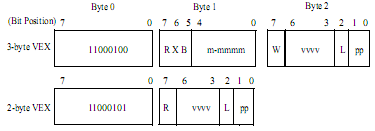In the DOS days there was this lovely trick that you could just ‘ret’ anytime you wanted and the process would be terminated, I’m talking about .com files. That’s true that there were no real processes back then, more like a big chaotic jungle. Anyways, how it worked? Apparently the RET instruction, popped a zero word from the stack, and jumped to address 0. At address 0, there was this PSP (Program Segment Prefix) which had lots of interesting stuff, like command line buffer, and the like. The first word in this PSP (at address 0 of the whole segment too) was 0x20CD (instruction INT 0x20), or ‘Terminate Process’ interrupt. So branching to address 0 would run this INT 0x20 and close the program. Of course, you could execute INT 0x20 on your own, but then it would cost another byte :) But as long as the stack was balanced it seemed you could totally rely on popping a zero word in the stack for this usage. In other times I used this value to zero a register, by simply pop ax, for instance…
Time passed, and now we all use Windows (almost all of us anyway) and I came with a similar trick when I wrote Tiny PE. What I did was to put a last byte in my code with the value of 0xBC. Now usually there is some extra bytes following your code, either because you have data there or page alignment when the code section was allocated by the PE loader. This byte really means “MOV ESP, ???”. Though we don’t know what comes next to fill ESP with (some DWORD value), probably some junk, which is great.
At the cost of 1 byte, we caused ESP to get some uncontrolled value, which probably doesn’t map to anywhere valid. After this MOV ESP instruction was executed, nothing happens, alas, the next instruction is getting executed too and so on. When the process gets to terminate you ask? That’s the point we have to wait for one of two conditions to occur. Either by executing some junk instruction that will cause an access violation because it touched some random address which is unmapped. Or the second option is that we run out of bytes to execute and hit an unmapped page, but this time because of the EIP pointer itself.
This is where the SEH mechanism comes in, the system sees there’s an AV exception and tries to call the safe-exception handler because it’s just raised an exception. Now since ESP is a junk really it’s in an unrecoverable state already, so the system terminated the process. 1 byte FTW.
